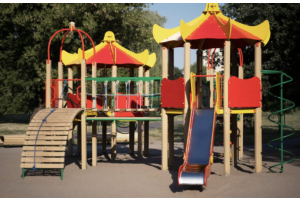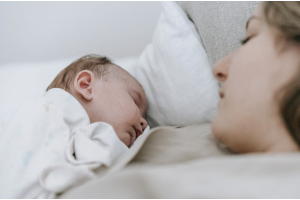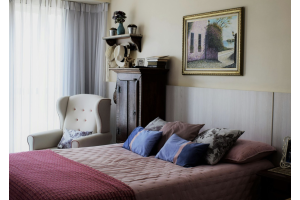How to Prepare Your Home for a New Baby

Bringing a new baby home is an exhilarating experience, filled with joy and a fair share of anxiety about getting everything just right. The key to reducing this stress is preparation. Ensuring your home is a safe, welcoming space for your newest family member is crucial, and it starts with some essential steps that transform your living area into a baby-friendly sanctuary.
Creating a Safe Sleeping Environment
The nursery is where your baby will spend a lot of time, so it's imperative to make it as safe and comfortable as possible. Start with the crib—it's the centerpiece of nursery safety. Choose a sturdy crib that meets all modern safety standards. The mattress should fit snugly within the crib with no gaps. Opt for a firm mattress covered with a fitted sheet, avoiding loose bedding or soft toys, which pose risks of suffocation.
Positioning the crib is also vital; it should be placed away from windows, blinds, and curtains to prevent drafts and eliminate risks of strangulation from cords. Consider the room's overall safety as well, including the roof. A secure and leak-proof roof is essential, not only for general safety but also for maintaining a dry, mold-free environment. If the existing roof is old or damaged, planning a roof replacement can be a smart step to ensure the nursery is safely shielded from the elements. This not only enhances safety but also ensures the long-term comfort and health of your newborn.
Baby-Proofing the Home
Once the nursery is set, broadening your safety measures to the rest of your home is next. Baby-proofing is a critical step that should be tackled well before the baby arrives to avoid last-minute hazards. Start with the basics: install safety latches on cabinets and drawers. These prevent little hands from accessing medicines, household cleaners, and other dangerous items. Secure furniture to the wall to prevent tipping, and use corner protectors on furniture to shield against sharp edges.
Don’t overlook less obvious hazards. Ensure all smoke detectors are working, have a fire extinguisher accessible, and check that all windows lock securely. Electrical outlets should be covered, and cords from blinds or curtains tied up out of reach.
Setting Up a Diaper Changing Station
Efficiency is key when setting up a space for changing diapers. The station should be stocked with all the essentials: diapers, wipes, a changing mat, rash cream, and a diaper pail. Position the changing station in an area that's easily accessible both day and night. Many parents choose to have a primary changing station in the nursery and a secondary one in the living area. This setup minimizes the need to travel far during those frequent changes, which is especially helpful in the early days when you're adjusting to your new routine.
Organizing Baby Clothes and Supplies
Organizing baby clothes by size and season makes it easier to keep track of what you have and what your baby may need next. Invest in clear storage bins and label them by size: newborn, 0-3 months, 3-6 months, etc. This not only helps during the baby’s growth spurts but also simplifies the process of finding outfits, particularly when you’re sleep-deprived. Keeping supplies organized and within reach can streamline your daily routines and reduce stress.
Preparing for Emergencies
Emergencies can strike without warning, and with a new baby in the home, being prepared is more important than ever. Start by compiling a list of essential emergency contacts, including the local pediatrician, nearest hospital, and poison control center. Keep this list in a readily accessible location, perhaps on the refrigerator or stored in your mobile phone. You should also prepare an emergency kit specifically tailored for your baby’s needs. This kit should include items like a baby thermometer, pediatrician-approved medications for fever and cold, and basic first aid supplies.
It’s also wise to familiarize yourself with basic infant first aid and CPR procedures. Many local community centers and hospitals offer courses, and these can be invaluable in a crisis. Having the knowledge and tools to handle an emergency will provide peace of mind and ensure that you're ready to act confidently if needed.
Cleaning and Hygiene
Keeping your home clean is more crucial than ever with a new baby. Babies are vulnerable to infections as their immune systems are still developing, so maintaining a clean environment can help protect them. Prioritize areas where the baby spends most of their time, such as the nursery, living room, and kitchen. Use non-toxic cleaning products to wipe down surfaces, as these are safer for babies and equally effective at eliminating germs. Regularly launder crib bedding and baby clothes in hypoallergenic detergent to avoid skin irritations.
One more thing to think about is the air quality in your home. Regularly replacing air filters in your heating and cooling systems can reduce potential allergens and dust. If you have pets, keep their areas clean and away from the baby’s primary living spaces to minimize the transfer of pet hair and dander.
Creating a Welcoming Atmosphere
The atmosphere of your home goes a long way in creating a soothing environment for your baby. Soft, muted colors in the nursery can help soothe and calm your baby. Consider using blackout curtains to easily control the lighting in the nursery, mimicking nighttime any time of day to help your baby sleep better. Soft, ambient noise can also be beneficial. A white noise machine can emulate the sounds heard in the womb, providing comfort and promoting better sleep for your baby.
Also, the temperature of your home should be comfortably warm but not overly heated. Babies cannot regulate their body temperature as adults do, so keeping your home at a moderate temperature will help keep your baby comfortable and safe.
Ready for Arrival
With the nursery prepared, emergency plans in place, cleanliness routines established, and a welcoming atmosphere created, your home is now a sanctuary fit for your new arrival. Welcoming a new baby is a transformative experience, and though it comes with its set of challenges, preparing your home thoroughly will allow you to focus more on the joys of parenthood and less on the logistics.
As you step into this exciting new chapter, remember that the best environment for your baby is one filled with love and care. The preparations you've made will ensure your home nurtures and supports your baby's growth and development, making it a safe, happy place for your little one to thrive.






